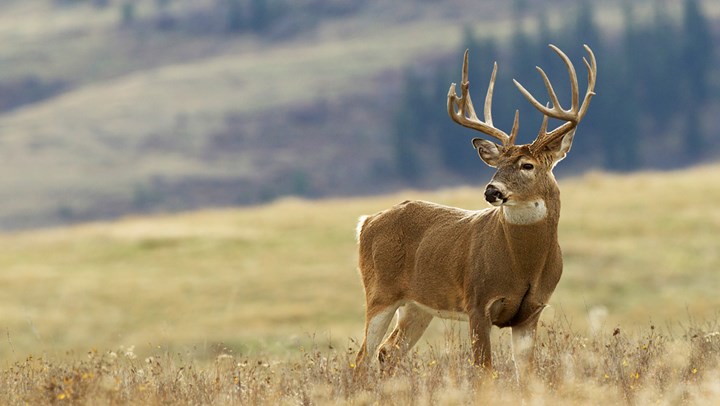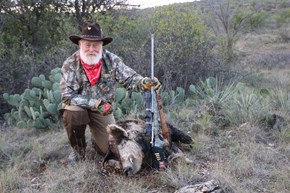
by Larry L. Weishuhn, wildlife biologist and outdoor TV host - Tuesday, September 5, 2017

“Sir, you cannot bring that elk carcass into Texas. The meat has to be deboned, the cape has to be removed, and all brain tissue, meat and connective tissue have to be removed from the skull plate. If not, you’ll have to take it to a check station where the brain stem can be removed and checked for chronic wasting disease!” instructed the Texas game warden who had just stopped an acquaintance trying to bring his elk into Texas from New Mexico. “Your tag and license are in order, but now we have new rules regarding bringing elk and deer carcasses into Texas. I’ll call the wildlife biologist in charge of the check station to let him know you’ll be there in about 30 minutes.”
A month later, I hunted whitetails in Oklahoma and took a mature whitetail worthy of being mounted by The Wildlife Gallery. Before heading home to Texas, I caped the buck and removed the skull plate. Using boiling water, I completely cleaned the skull plate of all tissue. Next I boned out the quarters, making certain to remove all bones and lymph nodes where prions that can cause chronic wasting disease (CWD) tend to concentrate. Then I placed the skull and all other bones, lymph nodes, back skin and the offal into plastic bags. These I buried two feet deep to keep coyotes, hogs and other critters from eating them and spreading the bones. Once the cape was frozen, the deboned meat was thoroughly cooled and the skull plate was thoroughly cleaned, as required by Texas’ new rules for bringing harvested deer and elk into the state, and I headed home.
While CWD is not a new discovery, decades later it remains a concern amongst wildlife biologists. As defined by Texas Parks and Wildlife, chronic wasting disease is a neurological disease in deer, elk, moose and other members of the deer family that takes over an animal’s nervous system. The animal exhibits zombie-like characteristics as deformed proteins called prions begin to cause normal proteins to change. In many states, those of us who hunt out-of-state and want to transport meat and antlers (either skulls for European mounts or skull plates for shoulder or full body mounts) back home now face new regulations to help reduce the risk of spreading CWD. Most states require returning hunters at a minimum to debone their deer, elk and/or moose carcasses before crossing their home-state line. They also require caped and cleaned skull plates, as well as thoroughly cleaned elk “bugling teeth,” or ivories. Completed taxidermy can also be brought home.
So before leaving home to hunt another state this fall, carefully check ever-changing rules and regulations regarding CWD. The most recent regulations can be obtained through online research, such as by “googling” CWD state regulations or by visiting the given state’s Department of Natural Resources website. Know the locations of possible check stations in the state where you plan to hunt and what your home state requires to be able to bring back meat, antlers, capes and other body parts. It’s the right and wise thing to do!
■ ■ ■
About the Author
Legendary “Mr. Whitetail,” Larry Weishuhn, host and owner of DSC's "Trailing the Hunter's Moon," is one of the most popular and widely-recognized wildlife biologists and outdoor media personalities nationwide. Over the past five decades, he has authored multiple books and numerous articles on hunting and wildlife conservation. In his 2004 book, Trailing the Hunter's Moon, was named Foreword Magazine's Gold Book of the Year in the Adventure and Recreation category.
Over the past five decades, he has authored multiple books and numerous articles on hunting and wildlife conservation. In his 2004 book, Trailing the Hunter's Moon, was named Foreword Magazine's Gold Book of the Year in the Adventure and Recreation category.
A lifelong hunter, Weishuhn has long served as a featured speaker for the NRA and other organizations including Dallas Safari Club (DSC) and the Texas Wildlife Association (TWA), where he was one of three co-founders promoting science-based wildlife management, firearms and hunting. For more information, click here.
E-mail your comments/questions about this site to:
[email protected]
Proudly supported by The NRA Foundation and Friends of NRA fundraising.
